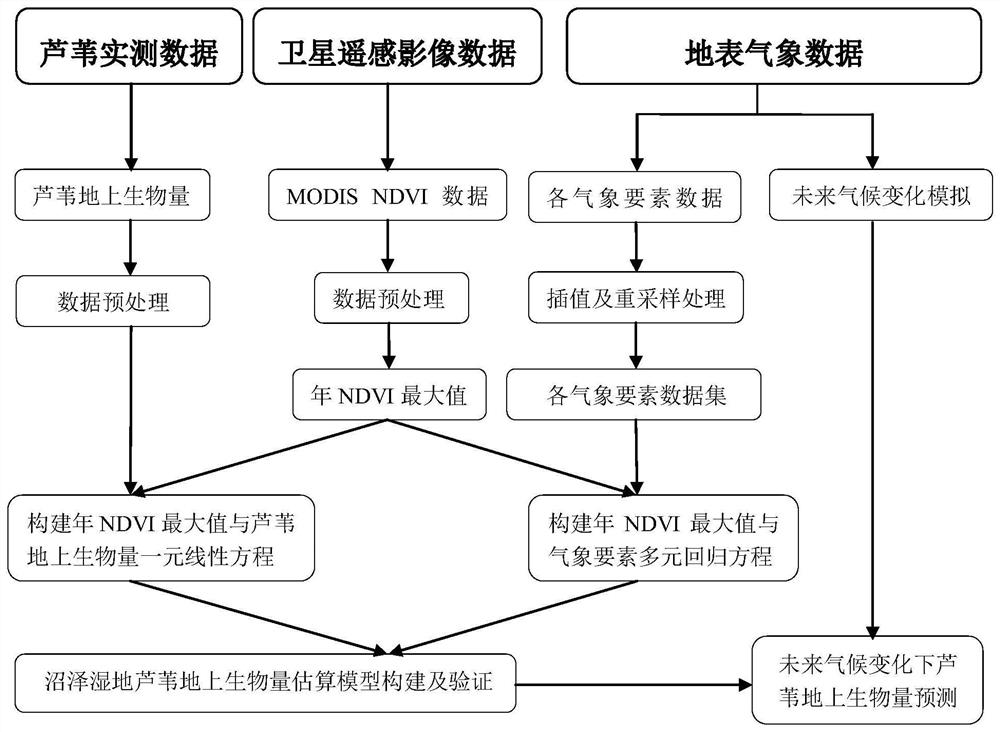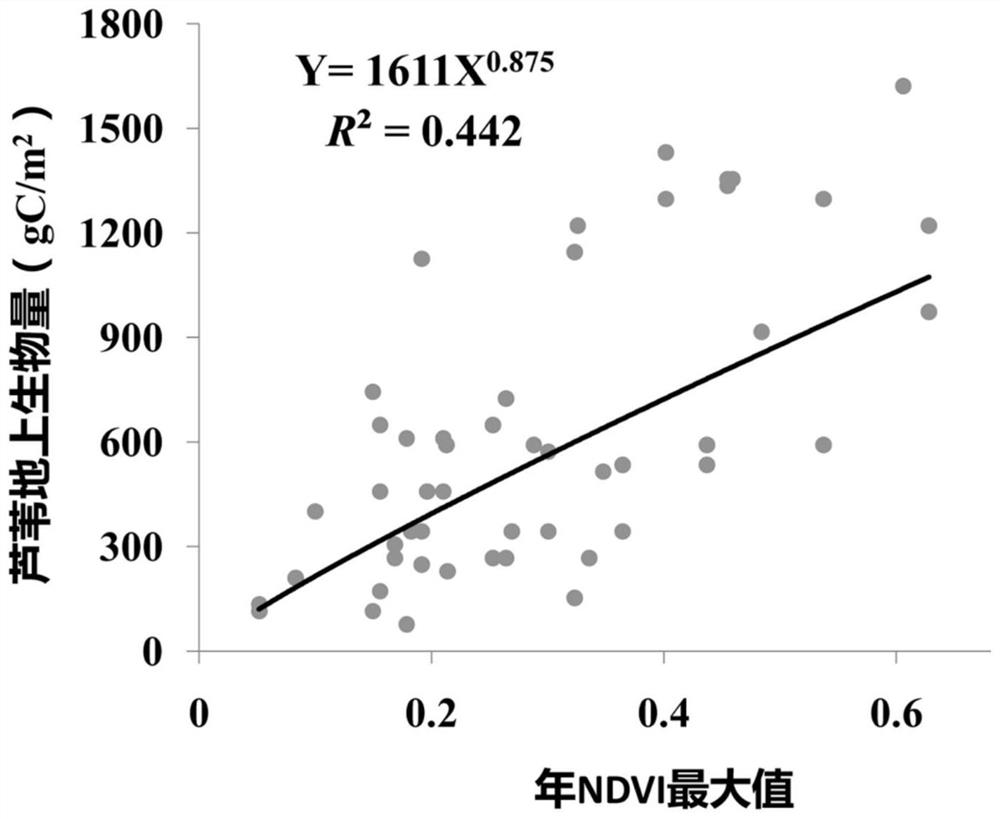Marsh wetland reed aboveground biomass estimation method
A biomass and reed technology is applied in the field of reed above-ground biomass in swamp wetlands under the prediction of future climate change, which can solve the problems of long period, future biomass prediction, and inability to quickly and accurately estimate regional reed biomass.
- Summary
- Abstract
- Description
- Claims
- Application Information
AI Technical Summary
Problems solved by technology
Method used
Image
Examples
specific Embodiment approach 1
[0029] Specific implementation mode 1: In this implementation mode, a method for estimating aboveground biomass of reeds in swampy wetlands is as follows:
[0030] 1. Acquire the medium-resolution imaging spectrometer normalized difference vegetation index data set covering the research area, the surface meteorological observation data set, and the measured aboveground biomass data of reeds in the swamp wetland, and preprocess the data;
[0031] 2. Using the ordinary Kriging interpolation method to interpolate the surface meteorological observation data to obtain a data set of the spatial distribution of the numerical values of each meteorological element in the long-term sequence within the research period;
[0032] 3. Resampling the spatial distribution data sets of the long-term series meteorological elements with the same resolution as the vegetation index data, and unifying them into the same projection and coordinate system as the vegetation index data set;
[0033] 4....
specific Embodiment approach 2
[0045] Specific embodiment two: the difference between this embodiment and specific embodiment one is that the data preprocessing method described in step one is as follows:
[0046] 1. Atmospheric correction, radiation correction, and geometric correction are performed on the vegetation index dataset;
[0047] 2. Calculate the average value of the repeated sample plot values of reed aboveground biomass at each sampling point, and use the average value of reed aboveground biomass of all sample plots corresponding to each sampling point to represent the aboveground biomass value of reed at the sampling point. Others are the same as the first embodiment.
PUM
 Login to View More
Login to View More Abstract
Description
Claims
Application Information
 Login to View More
Login to View More - R&D
- Intellectual Property
- Life Sciences
- Materials
- Tech Scout
- Unparalleled Data Quality
- Higher Quality Content
- 60% Fewer Hallucinations
Browse by: Latest US Patents, China's latest patents, Technical Efficacy Thesaurus, Application Domain, Technology Topic, Popular Technical Reports.
© 2025 PatSnap. All rights reserved.Legal|Privacy policy|Modern Slavery Act Transparency Statement|Sitemap|About US| Contact US: help@patsnap.com



